Wednesday, August 18, 2010
Sunday, August 1, 2010
Ankle Surgery
Several weeks after Ironman St. George, I had an MRI exam on my right ankle/heal. The initial read of the MRI was a rupture or tear of the achilles tendon. After additional scans, x-rays, and physical examinations, orthopedic surgeons from two different medical groups revised the diagnosis to torn lateral ankle ligaments. Both surgeons agreed that, although the injury was revealed during the Ironman, the condition likely predated the event perhaps by several years.
I’ve broken my right ankle twice – once while playing soccer in 8th grade and once while playing basketball in college. I’m told each break likely lengthened the lateral ligaments in my ankle. The stretched ligaments made me prone to ankle sprains. Due to my loose ankle, I suffered many sprains in the subsequent 20+ years and with each sprain the ligaments became more and more stretched out. What I now know is the musculature of my ankle was likely my sole source of ankle stability as an adult and muscle fatigue revealed the symptoms of my torn ankle ligaments.
My doctors recommended ligament reconstruction surgery. The prognosis is very good. The procedure, called the modified brostrom procedure, has a very high success rate and the prognosis after the surgery is ankle stability and a return to an active lifestyle. I'm under the care of a top orthopedic surgeon and am very optimistic. I underwent surgery on July 29, 2010.
I’ve broken my right ankle twice – once while playing soccer in 8th grade and once while playing basketball in college. I’m told each break likely lengthened the lateral ligaments in my ankle. The stretched ligaments made me prone to ankle sprains. Due to my loose ankle, I suffered many sprains in the subsequent 20+ years and with each sprain the ligaments became more and more stretched out. What I now know is the musculature of my ankle was likely my sole source of ankle stability as an adult and muscle fatigue revealed the symptoms of my torn ankle ligaments.
My doctors recommended ligament reconstruction surgery. The prognosis is very good. The procedure, called the modified brostrom procedure, has a very high success rate and the prognosis after the surgery is ankle stability and a return to an active lifestyle. I'm under the care of a top orthopedic surgeon and am very optimistic. I underwent surgery on July 29, 2010.
Thursday, May 6, 2010
Ironman St. George - Race Report
Getting to the Line
Two months before Ironman St. George took place, I injured my right heel during an 8-mile training run. At the time, an 8-mile run was ‘no big deal’. I’m at a loss as to how the injury happened. The next morning my achilles felt ‘gushy’, later that afternoon I was barely able to walk. I was told I had chronic achilles tendonitis.
The good news was that I discovered the injury did not prevent me from swimming or biking. After a long night of soul searching, I made the decision to continue with a modified training plan and a different Ironman goal. My plan was to crush the swim, fly on the bike, and walk the entire marathon.
The next two months of training took more courage than the race itself. My injury showed little to no improvement and three of my close friends dropped out of the race. I struggled with anxiety related to the injury, but stayed committed to getting to the starting line.
The ‘Swim Course’
The best way I can describe the Ironman swim is to compare it to the running of the bulls in Spain, but in the water. As comfortable as I am in the water, it is definitely a scary feeling. I seeded myself at the very front of the starting line and tried to forget about the 2,200 athletes at my back. I focused instead on the clear line of sight I had to the first swim buoy. The cool water of the Sand Hollow Reservoir reflected the golden hues of the morning sun. I calmed my mind and repeated a typical swim course my friends and I at the Dolphin Club might swim on any given morning, “Opening, repair, goal post, flag and in. . . Opening, repair, goal post, flag and in. . .” The spectators began to cheer and the athletes reacted. “OPENING, REPAIR, GOAL POST, FLAG. . . “
BOOM! Ironman was here and the race was on!
The Swim
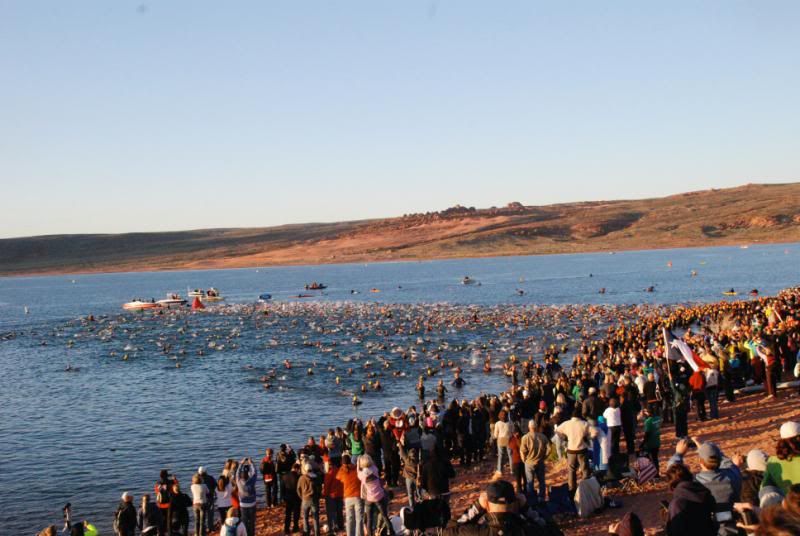
My visualization transported me from the insanity of the Ironman swim to the calm of swimming with my closest friends in San Francisco bay. I owe every one of them for the training and their spectral appearance next to me as we clawed, pushed, and pulled our way through the 2.4 mile course. It was exhausting and I took a few hits like everyone else. In fact, I got a killer black eye during the swim, but my mind and body remained calm and I exited the water with a personal Ironman best 1:09.
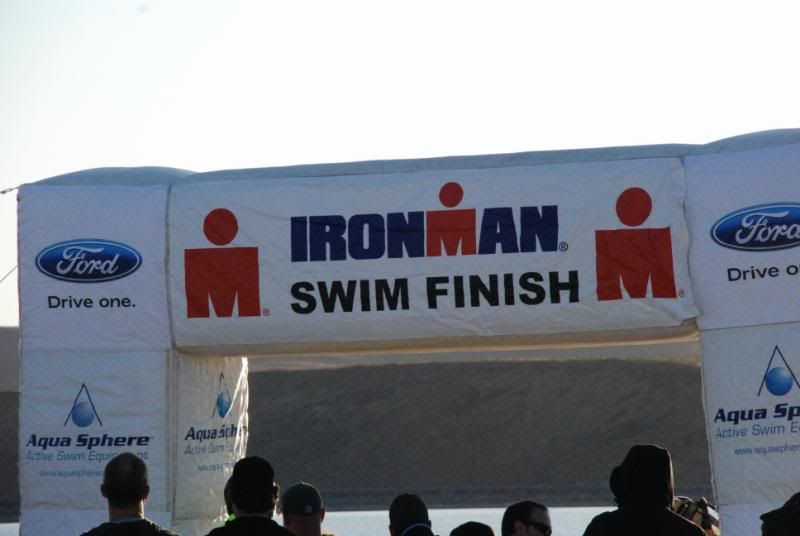
The Bike
There is only one word that accurately describes the Ironman SG bike course. . . ‘epic’. The bike course was beautiful, heartbreaking, and dangerous. It was, without a doubt, the most incredible ride I’ve ever experienced. It was also the most challenging, frustrating, and desperate experience I’ve had in triathlon.
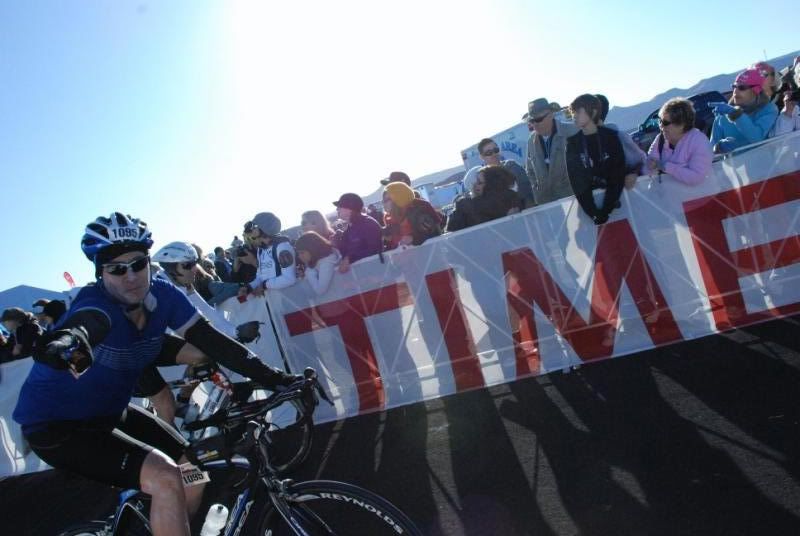
About 20 miles into the 112-mile course, my rear tire blew. I jumped off my bike and the wheel off in record time, and then things got worse. I couldn’t remove the rear extender on the tube and couldn’t release enough air pressure to remove the tire. It was too flat to ride on and yet had too much air pressure to remove the tire. 10 minutes and 100 athletes passed . . .
Exhausted from the struggle, I decided to break the extender off the rim. I can’t explain what happened after I snapped the extender off, but the tire still wouldn’t deflate. Time passed and I grew more frustrated. After working my fingers bloody, I sat beside the road and tried to collect myself.
Just then I heard a call from across the road. It was a policeman and he wanted to help. Moments later he tossed me a knife. One click and the very dangerous looking switchblade snapped into place. I slipped the knife between the tire and the rim and sliced the tube. After the repair was complete, I thanked the officer, and sprinted to regain my position in the race.
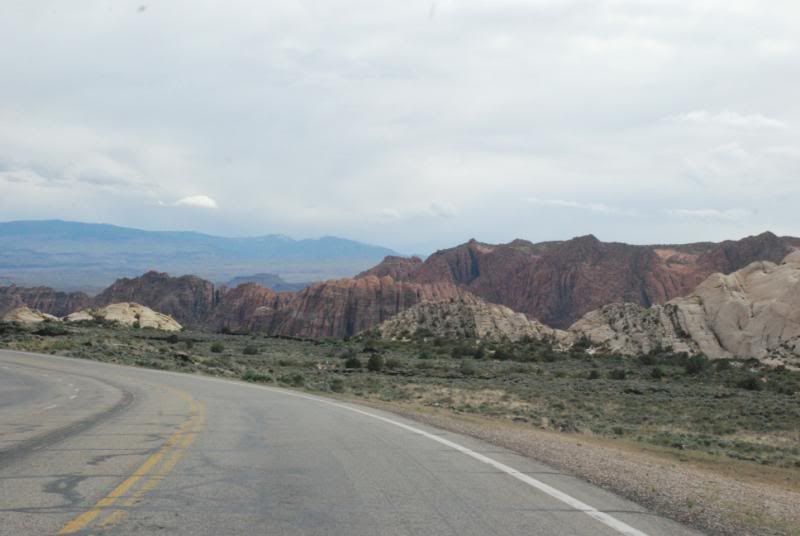
The next 70 miles or so were an exhausting blur. The canyons guarded the course with gusts of wind that nearly blew me off my bike. The climbs painted a picture I’ve never seen in the sport of triathlon. . . a trail of Ironman triathletes walking, pushing their bikes up a perfectly paved road.
Red rocks, winding canyons roads, green pastures, black crested cliffs, ghost like bluffs, wind, sweat, and heat. The course was getting the better of me and I didn’t even know it. As I approached the last aid station at mile 80, I saw my family for the first time since wading into the water so many hours and miles ago. My spirits were lifted and I regained my focus for the most difficult 2-hour ride of my life.
The bike cut off time was 5:30 p.m. and I was in serious jeopardy of missing the mark. 2 hours to go and I needed a negative split to make the cut off. Every athlete I passed yelled out the same desparate question, “Do you think we’ll make the cut off?” I didn’t have the breath to speak but if I did I would have proclaimed, “You will if you ride with me!”
I was absolutely possessed on the last section of the ride, I’ve never ridden like that before and have vowed not to again. I pushed each grade by climbing out of the saddle, I tucked and maxed out at 48 mph on the downhills, and sprinted like madman on the flats. In the end, I made the bike cut off with 20 seconds to spare.
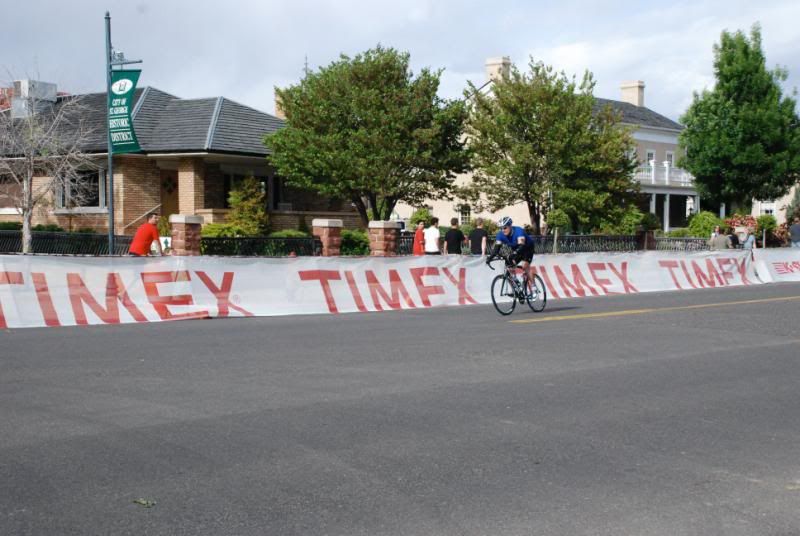
Chasing down the bike cut off was the highlight of my race and the most gut wrenching 120 minutes of racing I’ve ever experienced. Of all my races, I think I’m most proud of this 2-hour effort.
The Run

As I laced up for the run, I could hear the protests of bikers who hadn’t made the cut off time. Their day was over and I was still in the race and had an ample 6:20 to walk the marathon. I paired up with the last male athlete in T2 and we embarked on our 26.2-mile walk. My spirits were high, but my body was fried, it was difficult to even maintain a 15-minute mile pace. I took in everything offered at the first aide station – a cup of water, a handful of pretzels, a cup of warm chicken broth, a cup of flat soda, and a Gu. My body remembered. By the end of mile 2, I had recovered from the bike and strode confidently through the course ignoring the quiet pain in my in right heel.
Mile 6
At mile 3 the pain in my Achilles was too much to ignore. I shorted my stride to prevent the strain and that seemed to work until I hit the hills. I modified my stride every which way to prevent the strain, but I began to experience waves of pain in my heel and leg. I pushed on for another 3 miles. During that time recounted every struggle I’d experienced to get to this point. I visualized each person who had supported and believed in me.
At mile 6 the pain had become unbearable and for the first time in nearly 11 hours of racing, I stopped. I stood a top the highest peak of the run and turned back toward the setting sun, and came to the realization that my day was over. It wasn’t the crushing blow you might expect, in fact, I smiled proudly at the obstacles I had overcome and took in the view of run course. I admired all of the hundreds of athletes struggling on the run course below me. I felt grateful for the experience. I had lived a lifetime in one day. I recalled something I had heard 10 years earlier, "the summit is but one part of the mountain."
The Day After
As you might expect, the relative peace I experienced after withdrawing from Ironman at mile 120 of 140 with 5 hours remaining in the race was difficult to maintain. Rather than focusing on what might have been I decided to focus on how I could improve as an athlete and in the spirit of Ironman. . . I signed up for Ironman St. George 2011.
The race was a catalyst for change for me. A week hasn’t passed since I hobbled through that last mile to the top of the run course and I’ve already logged 3 hours of rehabilitative weight training and stretching at the gym. I’ve started to blog again. I’ve rededicated myself to my training and learning. I’ve rediscovered my love for the journey of Ironman.

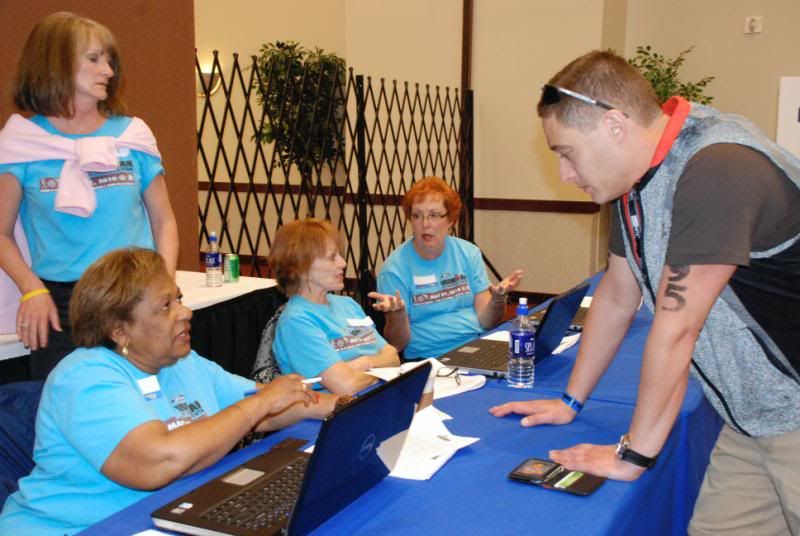
Two months before Ironman St. George took place, I injured my right heel during an 8-mile training run. At the time, an 8-mile run was ‘no big deal’. I’m at a loss as to how the injury happened. The next morning my achilles felt ‘gushy’, later that afternoon I was barely able to walk. I was told I had chronic achilles tendonitis.
The good news was that I discovered the injury did not prevent me from swimming or biking. After a long night of soul searching, I made the decision to continue with a modified training plan and a different Ironman goal. My plan was to crush the swim, fly on the bike, and walk the entire marathon.
The next two months of training took more courage than the race itself. My injury showed little to no improvement and three of my close friends dropped out of the race. I struggled with anxiety related to the injury, but stayed committed to getting to the starting line.
The ‘Swim Course’
The best way I can describe the Ironman swim is to compare it to the running of the bulls in Spain, but in the water. As comfortable as I am in the water, it is definitely a scary feeling. I seeded myself at the very front of the starting line and tried to forget about the 2,200 athletes at my back. I focused instead on the clear line of sight I had to the first swim buoy. The cool water of the Sand Hollow Reservoir reflected the golden hues of the morning sun. I calmed my mind and repeated a typical swim course my friends and I at the Dolphin Club might swim on any given morning, “Opening, repair, goal post, flag and in. . . Opening, repair, goal post, flag and in. . .” The spectators began to cheer and the athletes reacted. “OPENING, REPAIR, GOAL POST, FLAG. . . “
BOOM! Ironman was here and the race was on!
The Swim

My visualization transported me from the insanity of the Ironman swim to the calm of swimming with my closest friends in San Francisco bay. I owe every one of them for the training and their spectral appearance next to me as we clawed, pushed, and pulled our way through the 2.4 mile course. It was exhausting and I took a few hits like everyone else. In fact, I got a killer black eye during the swim, but my mind and body remained calm and I exited the water with a personal Ironman best 1:09.

The Bike
There is only one word that accurately describes the Ironman SG bike course. . . ‘epic’. The bike course was beautiful, heartbreaking, and dangerous. It was, without a doubt, the most incredible ride I’ve ever experienced. It was also the most challenging, frustrating, and desperate experience I’ve had in triathlon.

About 20 miles into the 112-mile course, my rear tire blew. I jumped off my bike and the wheel off in record time, and then things got worse. I couldn’t remove the rear extender on the tube and couldn’t release enough air pressure to remove the tire. It was too flat to ride on and yet had too much air pressure to remove the tire. 10 minutes and 100 athletes passed . . .
Exhausted from the struggle, I decided to break the extender off the rim. I can’t explain what happened after I snapped the extender off, but the tire still wouldn’t deflate. Time passed and I grew more frustrated. After working my fingers bloody, I sat beside the road and tried to collect myself.
Just then I heard a call from across the road. It was a policeman and he wanted to help. Moments later he tossed me a knife. One click and the very dangerous looking switchblade snapped into place. I slipped the knife between the tire and the rim and sliced the tube. After the repair was complete, I thanked the officer, and sprinted to regain my position in the race.

The next 70 miles or so were an exhausting blur. The canyons guarded the course with gusts of wind that nearly blew me off my bike. The climbs painted a picture I’ve never seen in the sport of triathlon. . . a trail of Ironman triathletes walking, pushing their bikes up a perfectly paved road.
Red rocks, winding canyons roads, green pastures, black crested cliffs, ghost like bluffs, wind, sweat, and heat. The course was getting the better of me and I didn’t even know it. As I approached the last aid station at mile 80, I saw my family for the first time since wading into the water so many hours and miles ago. My spirits were lifted and I regained my focus for the most difficult 2-hour ride of my life.
The bike cut off time was 5:30 p.m. and I was in serious jeopardy of missing the mark. 2 hours to go and I needed a negative split to make the cut off. Every athlete I passed yelled out the same desparate question, “Do you think we’ll make the cut off?” I didn’t have the breath to speak but if I did I would have proclaimed, “You will if you ride with me!”
I was absolutely possessed on the last section of the ride, I’ve never ridden like that before and have vowed not to again. I pushed each grade by climbing out of the saddle, I tucked and maxed out at 48 mph on the downhills, and sprinted like madman on the flats. In the end, I made the bike cut off with 20 seconds to spare.

Chasing down the bike cut off was the highlight of my race and the most gut wrenching 120 minutes of racing I’ve ever experienced. Of all my races, I think I’m most proud of this 2-hour effort.
The Run

As I laced up for the run, I could hear the protests of bikers who hadn’t made the cut off time. Their day was over and I was still in the race and had an ample 6:20 to walk the marathon. I paired up with the last male athlete in T2 and we embarked on our 26.2-mile walk. My spirits were high, but my body was fried, it was difficult to even maintain a 15-minute mile pace. I took in everything offered at the first aide station – a cup of water, a handful of pretzels, a cup of warm chicken broth, a cup of flat soda, and a Gu. My body remembered. By the end of mile 2, I had recovered from the bike and strode confidently through the course ignoring the quiet pain in my in right heel.
Mile 6
At mile 3 the pain in my Achilles was too much to ignore. I shorted my stride to prevent the strain and that seemed to work until I hit the hills. I modified my stride every which way to prevent the strain, but I began to experience waves of pain in my heel and leg. I pushed on for another 3 miles. During that time recounted every struggle I’d experienced to get to this point. I visualized each person who had supported and believed in me.
At mile 6 the pain had become unbearable and for the first time in nearly 11 hours of racing, I stopped. I stood a top the highest peak of the run and turned back toward the setting sun, and came to the realization that my day was over. It wasn’t the crushing blow you might expect, in fact, I smiled proudly at the obstacles I had overcome and took in the view of run course. I admired all of the hundreds of athletes struggling on the run course below me. I felt grateful for the experience. I had lived a lifetime in one day. I recalled something I had heard 10 years earlier, "the summit is but one part of the mountain."
The Day After
As you might expect, the relative peace I experienced after withdrawing from Ironman at mile 120 of 140 with 5 hours remaining in the race was difficult to maintain. Rather than focusing on what might have been I decided to focus on how I could improve as an athlete and in the spirit of Ironman. . . I signed up for Ironman St. George 2011.
The race was a catalyst for change for me. A week hasn’t passed since I hobbled through that last mile to the top of the run course and I’ve already logged 3 hours of rehabilitative weight training and stretching at the gym. I’ve started to blog again. I’ve rededicated myself to my training and learning. I’ve rediscovered my love for the journey of Ironman.


Subscribe to:
Comments (Atom)

